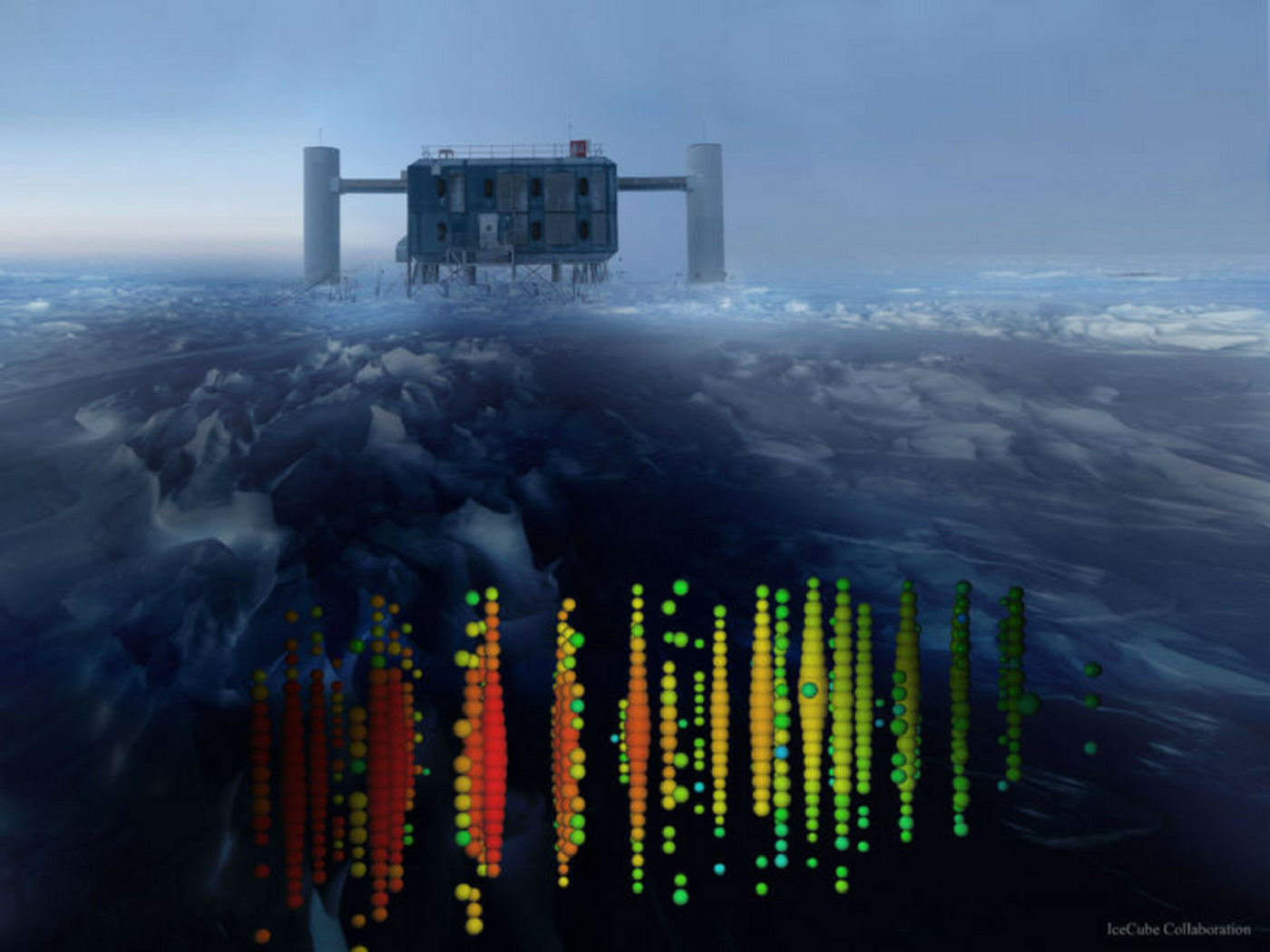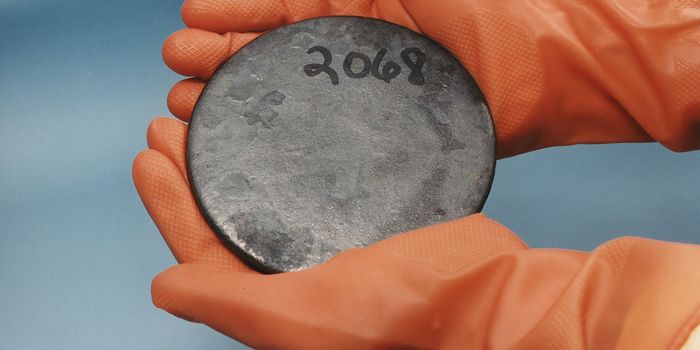Tracking Neutrinos with IceCube
Neutrinos are one of the most plentiful yet elusive fundamental particles out there. They are close to the more familiar electron, nearly massless, but with one crucial difference: neutrinos do not carry an electric charge. Because they are electrically neutral, neutrinos can pass through significant distances in matter without being affected, unlike electrons.
Neutrinos only interact with matter by a "weak" sub-atomic force, at a much shorter range than electromagnetism. If neutrinos have mass, they also interact gravitationally with other massive particles, but gravity is by far the weakest of the four known forces. Therefore they're incredibly hard to work with and hard to detect. Predictions made by the Standard Model of physics about neutrinos are consequently hard to verify.
The IceCube Neutrino Observatory is a neutrino research laboratory located at the Amundsen-Scott South Pole Station in Antarctica. It has an array of 5,160 basketball-sized optical sensors deeply encased within a cubic kilometer of very clear Antarctic ice.
IceCube is designed for research of neutrinos generated by the most violent astrophysical events like exploding stars, gamma-ray bursts, black holes and neutron stars. It is also a powerful tool to search for dark matter and could reveal the physical processes associated with the mysterious origin of the highest energy particles in nature.
IceCube is not the first establishment set up to study neutrinos from space (or has a “cool” nickname). The Sudbury Neutrino Observatory (SNO) was a neutrino observatory located 2.1 kilometers (1.3 miles) underground, at an abandoned mine in Sudbury, Ontario. The facility was designed to observe neutrinos from the sun, through their interactions with a large tank of heavy water. The detector was active between 1999 and 2006.
What is unique about IceCube is its specialized detection of the high energy neutrinos particles. The source of its neutrino supply is violent astrophysical objects that can spit out highly energetic neutrinos, with energy level as high as 980 TeraelectronVolts (TeVs). For comparison, the Large Hadron Collider accelerates its protons to a mere 6.5TeVs, and only smaller accelerators are used to produce neutrinos.
Therefore, IceCube is well placed to test a Standard Model prediction, which is that neutrinos are more likely to interact with matter at higher energies. By measuring the Cherenkov radiation patterns (Cherenkov radiation are lights created when neutrinos interact with the ice) in or near the detector array, IceCube detectors can estimate the neutrinos’ directions and energies. It allows scientists to evaluate neutrinos that enter the IceCube from every angle, including those reaching the detector by traveling through the Earth.
The team recently published their preliminary results on the journal Nature. Much of their analysis was based on one year of data from about 10,800 neutrino-related interactions recorded at the IceCube.
According to the Standard Model, the Earth should provide higher interaction frequencies of neutrinos at sufficiently high energies. As predicted, the researchers observed that the number of neutrinos arriving through the Earth dropped compared to the ones coming in tangentially. And their frequency declined further as a product of energy.
As expected, the IceCube team saw the linear increase between interactions and the neutrino energy. But they also observed a slight hint of a curve in the data, suggesting that neutrinos interact with regular matter via two particles called the W and Z bosons. The mass of these two bosons causes a slight deviation from the linear relationship.
A lot of their results are preliminary because the analysis was done with a single year's worth of data. The team of international scientists has six additional years worth of data to go through, which they hope to conduct more accurate analyses and produce more interesting findings.
Meanwhile, the IceCube group have also found an unexpected implication of their findings, in the field of geology. They noticed that some of the neutrinos that pass through the Earth would go through the core and others will graze through while avoiding it. The team hopes that more data can provide them a sense of the material properties of the Earth's core, something that's been notoriously difficult to study for the geologists.
Measuring the Neutrino Cross Section with Earth Absorption. Credit: IceCube Neutrino Laboratory
Source: Nature/ IceCube Neutrino Laboratory









